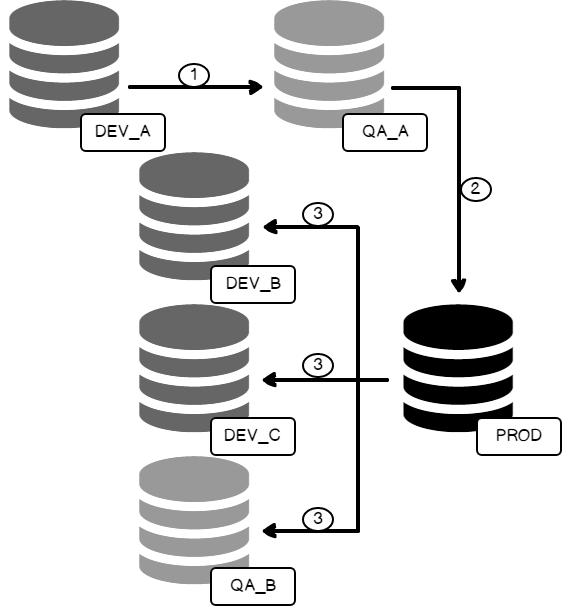This article gives an overview of Orphan users and fixing them using DBATools PowerShell.
Read more »



This article gives an overview of Orphan users and fixing them using DBATools PowerShell.
Read more »

Automating SQL Server tasks with PowerShell can increase productivity and save time, but how do use PowerShell encrypt password techniques to avoid saving them as plain text. This article will show you how.
Read more »

In this article, we will explore database backup validation by with SQL restore database operations using DBATools.
Read more »

This article will cover SQL restore database operations using the open-source PowerShell module, DBAtools, and will cover commands for backup restoration using the command Restore-DBABackup with many various permutations like restoring from file, separate directory, renaming databases, norecovery options and more
Read more »

This guide is all about provisioning SQL Server 2019 using Azure Container Instance (ACI), including the installation and configuration. In this article, we talk about the Azure Container Instance (ACI), the Azure PowerShell module, installation and configuration of SQL Server using the Azure PowerShell module, and automation of installation and deployment using templates.
Read more »

We have a convenient tool for working with PowerShell and SQL Server when using Invoke-SqlCmd. As we saw when running statements, we can run DDL and DML changes with the command without writing our own custom scripts. This carries advantages when we need to quickly develop with PowerShell, but it can come with drawbacks on security if we’re not careful how we use this function. We’ll look at security when using this function by starting with a few examples of what we can do when we have unlimited access along with how we can design to limit our environment to be strict with our use of this tool.
Read more »

In my earlier PowerShell SQL Server article, SQL Database Backups using PowerShell Module – DBATools, we explored the importance of a disaster recovery solution for an organization. Microsoft offers various disaster recovery solutions in SQL Server.
Read more »

In this article, we will review PowerShell SQL Server module DBATools to identify IDENTITY columns about to reach the threshold.
Read more »

This article will be first article of series for SQL database backup and restoration using DBAtools, a powerful open source library of PowerShell automation scripts.
Read more »

PowerShell features many one-line commands for working with SQL Server, one of which is Invoke-SqlCmd. This tool can be useful in many development contexts where we need to quickly execute scripts or test code and it helps to know some of the parameters we’ll often use. In addition, because we may want a custom script using some of the underlying .NET objects, we’ll look at an alternative where we will be able to create a custom PowerShell script that connects to SQL Server in order to run commands. The latter can be useful because one-line scripts have a tendency to change in future versions of PowerShell and working with the library directly can sometimes avoid this challenge.
Read more »

The PowerShell execution policy was developed with a vision to be friendly to administrators, and at the same time, be accessible to end users. More than the former, the latter goal was a little challenging to pull off, considering that convenience is, more often than not, inversely proportional to security.
Read more »

In this article, we will explore the DBAChecks PowerShell SQL Server Module. We can use the DBAChecks module to validate SQL Server instances using the various modules. We can also perform more than 100 configuration reviews using it.
Read more »

In this series of articles on SQL Server FILESTREAM (see TOC at bottom), we explored various ways to store unstructured data in the file system with the metadata in SQL Server tables. If we have a large number of objects in the file system, it is advisable to use the fast disk for storage purpose. It is faster and provides better IO in comparison with the traditional file system.




Data growth has raised the stakes in the market increasing the size of SQL Server estates that DBAs are expected to manage. Because of this, fast and efficient configuration management can be very helpful. To this end, let’s delve into this article to generate a SQL Server inventory using PowerShell.


DBAs have plenty of day-to-day tasks to do as part of administration, but one overarching task is managing the entire SQL Server environment. To do this, the full SQL Server estate must be discovered and inventoried. To accomplish that all SQL Server instances, that exist, must be found.


We made a collection of the most popular PowerShell bloggers, including a link to each individual blog. The ranking is based on Alexa global score.
If your blog is on this list, you can display the ‘Top blogger’ badge on your blog. Please see the bottom of the page for the instructions on how to display the badge on your website
Read more »

This article is an in-depth guide on how PowerShell can be used to maintain and manage SQL backup on Linux and Windows machines.
Here’s an outline of what this article is all about:


We have some custom files that we receive from different providers and for these situations we are unable to use standard ETL programs without any customization. Since we’re expanding our ability to read these custom files with .NET, we’re looking for efficient ways to read files with PowerShell that we can use in SQL Server Job Agents, Windows Task Schedulers, or with our custom program, which can execute PowerShell scripts. We have many tools for parsing data and wanted to know efficient ways of reading the data for parsing, along with getting specific lines of data from files by number, or by the first or last line of the file. For reading files efficiently, what are some functions or libraries we can use?
Read more »

Data is the key to your organization’s future, but if it’s outdated, irrelevant, or hidden then it’s no good. Maintenance and administration of databases takes a lot of work. As database administrators, we often tend to automate most of these repetitive tasks. A database refresh is one of the most common tasks performed by most of the administrators as part of their daily routine.
Today, database refreshes are quite frequent because of Continuous Integration (CI) and Continuous Deployment (CD). In most of the cases, testing requires a separate but current production dataset to ensure the validity of the desired result.
Read more »

This article is the first step among many that I hope will help give you a foundation of knowledge to get started utilizing PowerShell. The focus in these steps will be specific to using PowerShell with SQL Server, but I have to cover some of the basic things. Which once you grasp the basics of PowerShell and using it, in a general sense, you set yourself up for easily learning how to use it with other products.
In this article I’m going to touch on the following items:


Intended audience
This document is intended for application developers and database administrators who are willing to learn how to generate charts from data stored in Microsoft SQL Server using PowerShell.
Context
In previous article entitled Overview of PowerShell Charting capabilities we’ve seen some components of an assembly called System.Windows.Forms.DataVisualization assembly that is part of the .NET Framework and how to load it inside PowerShell.
Now, it’s time to use what we’ve learned so far.
Read more »

Intended audience
This document is intended for application developers and database administrators who are willing to learn how to generate charts from data stored in Microsoft SQL Server using PowerShell.
Read more »

With a distinct lack of up-to-date, fully featured or built-in options to get Reporting Services content cleanly from A to B, it can often be a challenging task maintaining proper Development and QA environments or even moving reports from a SharePoint integrated installation to a native mode one, and vice versa.
I want to explore the two most efficient methods of bulk-migrating Reporting Services content & also explore other options I’ve used over the years and those that have come and gone.
Read more »

PowerShell has become the ultimate choice for many database administrators because of its efficient way of handling and managing automation in a simple, quick way. It’s built on .NET Framework and uses Object Models such as COM, ADSI, ADO, and WMI. PowerShell has replaced the traditional way of scripting that used many legacy scripting practices to monitor SQL instances.
I’ve been asked on several occasions about how to store the output of PowerShell WMI data into the SQL table. The question comes up so frequently that I decided to write this article.
When sending data within a system (such as a PowerShell object to a cmdlet), the process is straightforward. However, with non-native data interchange (for instance, WMI to SQL), the process can potentially get complicated. Due to this, many purists suggest sticking to simple interchange formats, such as CSV, JSON or in some cases, XML.
Read more »© Quest Software Inc. ALL RIGHTS RESERVED. | GDPR | Terms of Use | Privacy